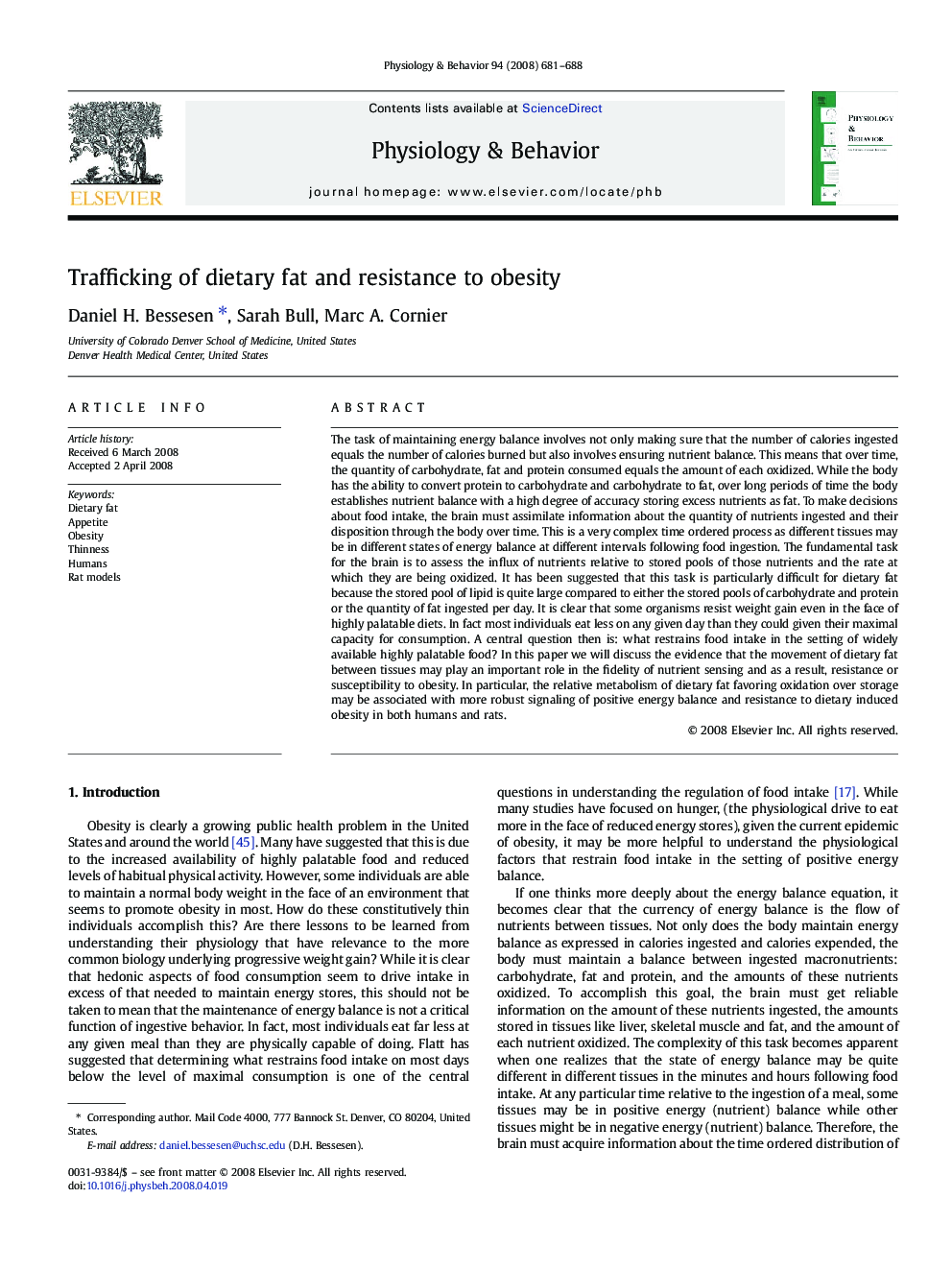| Article ID | Journal | Published Year | Pages | File Type |
|---|---|---|---|---|
| 2845899 | Physiology & Behavior | 2008 | 8 Pages |
The task of maintaining energy balance involves not only making sure that the number of calories ingested equals the number of calories burned but also involves ensuring nutrient balance. This means that over time, the quantity of carbohydrate, fat and protein consumed equals the amount of each oxidized. While the body has the ability to convert protein to carbohydrate and carbohydrate to fat, over long periods of time the body establishes nutrient balance with a high degree of accuracy storing excess nutrients as fat. To make decisions about food intake, the brain must assimilate information about the quantity of nutrients ingested and their disposition through the body over time. This is a very complex time ordered process as different tissues may be in different states of energy balance at different intervals following food ingestion. The fundamental task for the brain is to assess the influx of nutrients relative to stored pools of those nutrients and the rate at which they are being oxidized. It has been suggested that this task is particularly difficult for dietary fat because the stored pool of lipid is quite large compared to either the stored pools of carbohydrate and protein or the quantity of fat ingested per day. It is clear that some organisms resist weight gain even in the face of highly palatable diets. In fact most individuals eat less on any given day than they could given their maximal capacity for consumption. A central question then is: what restrains food intake in the setting of widely available highly palatable food? In this paper we will discuss the evidence that the movement of dietary fat between tissues may play an important role in the fidelity of nutrient sensing and as a result, resistance or susceptibility to obesity. In particular, the relative metabolism of dietary fat favoring oxidation over storage may be associated with more robust signaling of positive energy balance and resistance to dietary induced obesity in both humans and rats.
